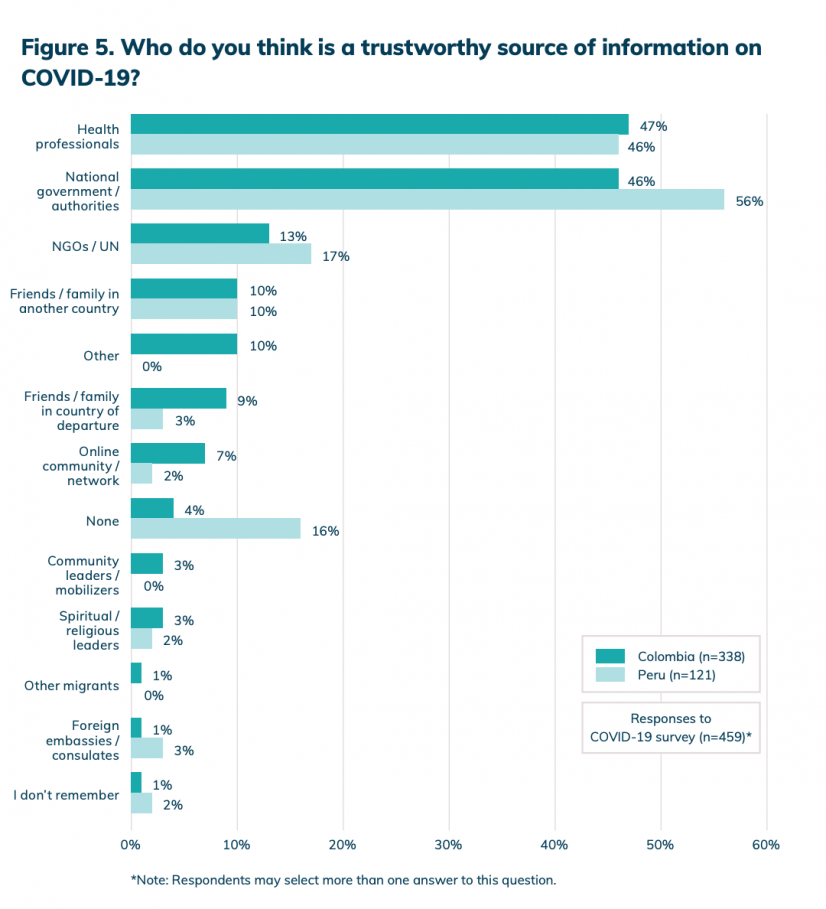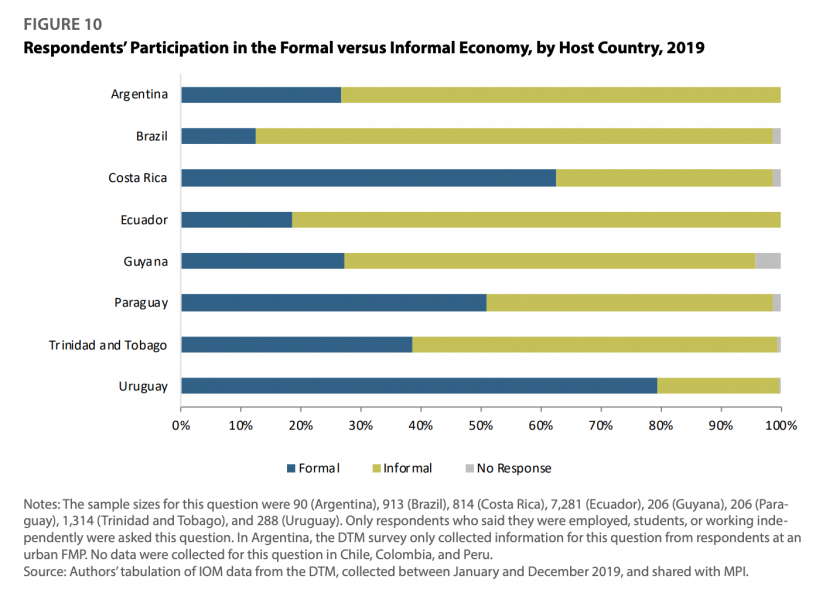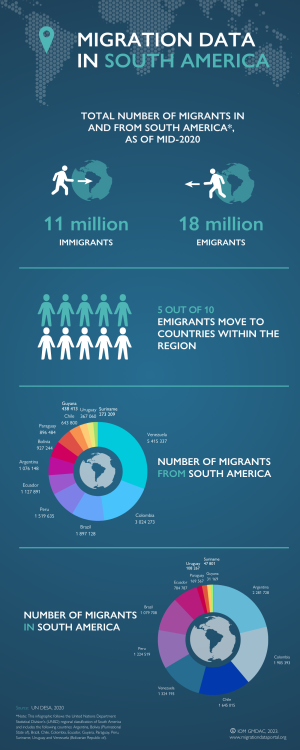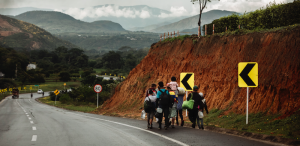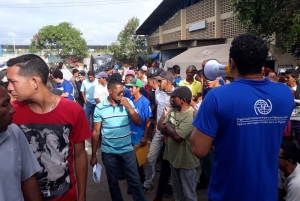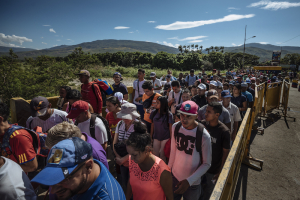Considering the gravity and the scope of mixed flows from Venezuelans as well as the fact that many Venezuelan migrants and refugees were already in a vulnerable position before the spread of the coronavirus due to issues such as irregular status or lack of job security, it is crucial to understand the impact of the pandemic on their livelihoods, make projections about future developments and try to find solutions for the challenges that they are facing. The Regional R4V Platform has been releasing regular regional COVID-19 Flash Updates detailing the evolving situation for refugees and migrants from Venezuela in the face of the pandemic and the regional response to COVID-19 and its impacts[1].
In order to better comprehend and remember the key facts, data visualizations provide an effective way to better and faster process the large numbers and understand the significance and meaning behind them. Here are 5 key data infographics, visualizing some of the most important information related to the impact of COVID-19 on refugees and migrants from Venezuela[1]:
1. What is the situation in the Bolivarian Republic of Venezuela with regards to the global health pandemic?
First things first – if you are interested in staying up-to-date on the latest information related to the evolution of COVID-19 in the region and in the Bolivarian Republic of Venezuela, the HUMANITARIAN DATA EXCHANGE COVID-19 Map Explorer by the United Nations Office for the Coordination of Humanitarian Affairs (OCHA) provides regularly updated data on the number of confirmed cases, number of health facilities per state and the INFORM Severity Index.[2]
Source: The HUMANITARIAN DATA EXCHANGE (HDX) COVID-19 Data Explorer by the United Nations Office for the Coordination of Humanitarian Affairs (OCHA), 2021.
2. How do Venezuelan migrants get information on COVID-19?
The Mixed Migration Centre provides an excellent resource for understanding how Venezuelan refugees and migrants are aware of and stay informed on COVID-19. This infographic answers the question “which sources of information on COVID-19 are found to be trustworthy by Venezuelan migrants”. It also provides ideas on how to better target information when circulating any future relevant knowledge and facts on the topic of COVID-19.
Source: Mixed Migration Centre, 2020.
3. What are the funding needs in the region?
The regional response plan for Venezuelans remains dangerously underfunded and the lack of funding towards dealing with the Venezuelan outflows has been a problem even before the emergence of COVID-19 in Latin America and the Caribbean. As of 19 February 2021, only 47.1 per cent of financial requirements had been met.
Source: R4V platform, 2021
4. What are the economic predictions post-COVID-19?
As economic difficulties in the Bolivarian Republic of Venezuela are one of the main drivers of human mobility, it is important to project how the Venezuelan economy will be affected by the COVID-19 pandemic. The World Economic Outlook October 2020 by the International Monetary Fund shows precarious prospects for many countries in the region, whereas the projections for the Bolivarian Republic of Venezuela’s economy look especially grim. This may be due to a combination of factors, including the continuing spread of the pandemic and overwhelmed health care systems, the greater importance of severely affected sectors and the greater dependence on external finance, including remittances.
Source: International Monetary Fund (IMF), World Economic Outlook, October 2020 (Data visualised by IOM GMDAC)
5. What economic difficulties are migrants and refugees from the Bolivarian Republic of Venezuela facing?
Before the COVID-19 pandemic refugees and migrants from the Bolivarian Republic of Venezuela were highly vulnerable. An MPI analysis of IOM Displacement Tracking Matrix (DTM) data from 2019 shows that the many lacked access to health care and the majority didn’t have health insurance. Moreover, a significant majority of respondents reported that they were working informally, a sector that has been particularly hard-hit during the pandemic.
Source: Migration Policy Institute, 2020
[1] https://r4v.info/es/situations/platform
[2] The INFORM Severity Index is a composite index that identifies: "the severity of humanitarian crisis globally."



